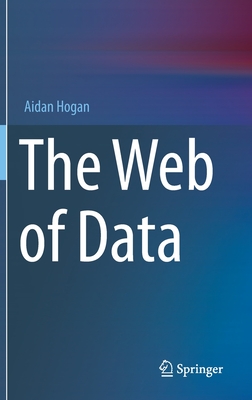Demystifying Owl for the Enterprise (Synthesis Lectures on Semantic Web: Theory and Technology)
暫譯: 企業中的貓頭鷹解密(語意網:理論與技術的綜合講座)
Michael Uschold
- 出版商: Morgan & Claypool
- 出版日期: 2018-05-29
- 售價: $2,550
- 貴賓價: 9.5 折 $2,423
- 語言: 英文
- 頁數: 237
- 裝訂: Paperback
- ISBN: 1681731274
- ISBN-13: 9781681731278
海外代購書籍(需單獨結帳)
商品描述
After a slow incubation period of nearly 15 years, a large and growing number of organizations now have one or more projects using the Semantic Web stack of technologies. The Web Ontology Language (OWL) is an essential ingredient in this stack, and the need for ontologists is increasing faster than the number and variety of available resources for learning OWL. This is especially true for the primary target audience for this book: modelers who want to build OWL ontologies for practical use in enterprise and government settings. The purpose of this book is to speed up the process of learning and mastering OWL. To that end, the focus is on the 30% of OWL that gets used 90% of the time.
Others who may benefit from this book include technically oriented managers, semantic technology developers, undergraduate and post-graduate students, and finally, instructors looking for new ways to explain OWL.
The book unfolds in a spiral manner, starting with the core ideas. Each subsequent cycle reinforces and expands on what has been learned in prior cycles and introduces new related ideas.
Part 1 is a cook's tour of ontology and OWL, giving an informal overview of what things need to be said to build an ontology, followed by a detailed look at how to say them in OWL. This is illustrated using a healthcare example. Part 1 concludes with an explanation of some foundational ideas about meaning and semantics to prepare the reader for subsequent chapters.
Part 2 goes into depth on properties and classes, which are the core of OWL. There are detailed descriptions of the main constructs that you are likely to need in every day modeling, including what inferences are sanctioned. Each is illustrated with real world examples.
Part 3 explains and illustrates how to put OWL into practice, using examples in healthcare, collateral, and financial transactions. A small ontology is described for each, along with some key inferences. Key limitations of OWL are identified, along with possible workarounds. The final chapter gives a variety of practical tips and guidelines to send the reader on their way.
商品描述(中文翻譯)
在經過近15年的緩慢孵化期後,越來越多的組織現在擁有一個或多個使用語意網技術堆疊的專案。網路本體語言(OWL)是這個堆疊中的一個重要組成部分,而對本體學家的需求增長速度超過了可用於學習OWL的資源的數量和多樣性。這對於本書的主要目標讀者尤其如此:希望在企業和政府環境中構建OWL本體的建模者。本書的目的是加速學習和掌握OWL的過程。為此,重點放在90%時間內使用的30% OWL上。
其他可能從本書中受益的人包括技術導向的經理、語意技術開發者、本科生和研究生,以及尋找新方法來解釋OWL的講師。
本書以螺旋式的方式展開,從核心概念開始。每個後續循環都加強並擴展先前循環中學到的內容,並引入新的相關概念。
第一部分是對本體和OWL的簡介,非正式地概述了構建本體所需的內容,接著詳細介紹如何用OWL來表達這些內容。這部分使用了醫療保健的例子來說明。第一部分以對意義和語意的一些基礎概念的解釋作結,以準備讀者進入後續章節。
第二部分深入探討屬性和類別,這是OWL的核心。詳細描述了在日常建模中可能需要的主要構造,包括哪些推論是被允許的。每個構造都用現實世界的例子來說明。
第三部分解釋並示範如何將OWL付諸實踐,使用醫療保健、擔保品和金融交易的例子。每個例子都描述了一個小型本體,並附上了一些關鍵推論。識別了OWL的主要限制以及可能的解決方法。最後一章提供了各種實用的提示和指導,幫助讀者繼續前行。



























